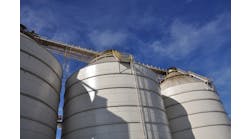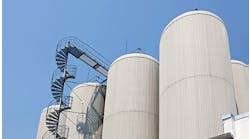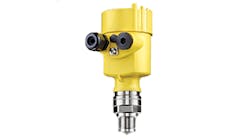A Reader Writes:
We are burning bark and wood byproducts in furnace cells and are having trouble controlling fuel level and combustion. We are able to measure fuel level with a laser instrument but the fuel quality varies from good bark to sawdust to dirt. Sometimes the bark feeder winds up but does not put in more bark, then overfeeds, which causes problems from poor combustion airflow to plugging. How can we improve control of this process?
--From May 2003 CONTROL
Solutions
Blend Before Feeding
You should consider blending the bark and wood byproducts to get close to a homogeneous mix before feeding the furnace. This however, may require multivariable testing to determine the best combination of bark and byproducts that will give good combustion.
Leroy Williams, Senior Process Engineer
IMC Phosphates, Mulberry, Fla.
Consider Consumed Air
Combustion control with solid fuels is typically difficult because the flow of potential energy to the furnace rarely relates directly to feeder speeds. Three factors account for variability in energy delivery for a given feeder setting:
- Energy content varies per mass of fuel. This is due to differences in wood species, contamination (combustible and inert), and especially moisture content of the fuel.
- Bulk density of the fuel can vary significantly. Since feeders are inherently volumetric devices, feeder speed does not necessarily dictate mass flow to the furnace.
- Depending on conveyor and feeder design, inconsistent filling of the feeder can contribute to variability. Fuel delivery must be coupled to fuel demand all the way back to the pile; otherwise, partial feeder filling may result.
These factors deny repeatability to the balance of feeder speed vs. energy delivery. The magnitude of these variances can easily overpower the demand signal, resulting in essentially no control. Accurately predicting these factors is almost impossible, preventing predictive control.
Many applications with this type of fuel variability control successfully with a consumed air strategy. Air consumed by the reaction correlates with combustion rate much better than feeder rates and can be used to close the energy balance. Consumed air maintains combustion rates by comparing actual air consumption with nominal, then adjusts the feeders to compensate for variable energy content.
This strategy has operated successfully for many years in powerhouse operations in pulp and paper mills on both chemical recovery and multiple fuel power boilers. Additional benefits include increased capacity due to more stable operation and a reduction in the number of upsets.
David Moore, Principal Applications Engineer
Automation Applications Inc., www.aai-csi.com
Measure by Weight
Adding a weight measurement on the bark feed belt immediately after the feeder and closing the loop on bark feed will eliminate problems of bark feeder windup and the resulting slugs of feed. If the feeder is located some distance from the boiler, then it is important to include a delay in the bark weight measurement value before it is used in the combustion strategy. The delay should be set to match the transport delay associated with the feed belt to the boiler.
Variations in bark quality may be addressed by compensating the bark feed input based on a heat release as indicated by boiler steam flow. However, in using the heat release method for air control, it is important the steam header be maintained constant by your swing boiler. Otherwise, the variation in header pressure temporarily can cause increases or decreases in steam flow that could be incorrectly interpreted as changes in heat release.
Terry Blevins, Principal Technologist
Emerson Process Management, www.easydeltav.com
Try a Pyrometer
I worked on a very similar problem. The only difference was that fuel feed was waste gas as opposed to bark and wood byproducts. After evaluating various options, the solution implemented consisted of installing a fast reacting pyrometer, which modulated fuel and air flow to the thermal oxidizer. The pyrometer was able to determine the quality of waste gas feed and the controls system would then adjust the combustion system accordingly. We also did a simulation of the control system to respond to the problem, confirming that the system would respond to the changes. The results confirmed that the system was capable of responding to the changing requirements.
Rakesh Gupta, PE, Consulting Engineer
Washington Group Intl., Princeton, N.J.
September's Problem:
How Can We Reach SIL 2 With Manual Intervention?
The safety system on our natural gas compression station has UV/IR temperature and gas sensors that notify the operator of a hazardous condition (fire or gas leak). The operator then activates the safety system, which is run by a PLC certified by TUV for SIL 2. Can this system be made to qualify for SIL 2, and if so, how?



